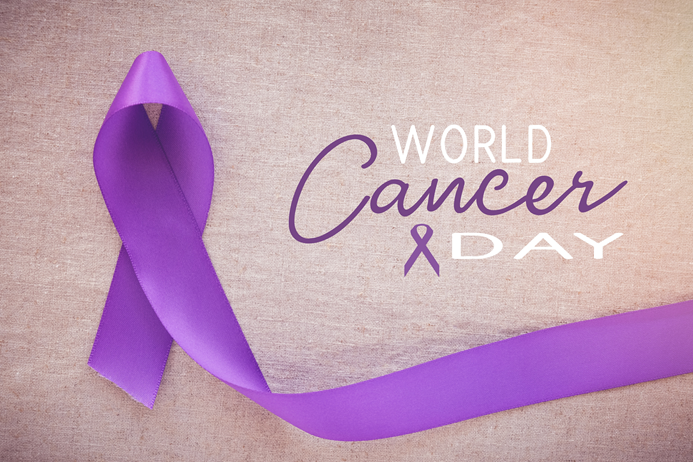
On February 4th was World Cancer Day. That’s why the current blog post answers the question of what cancer actually is and how it develops.
History
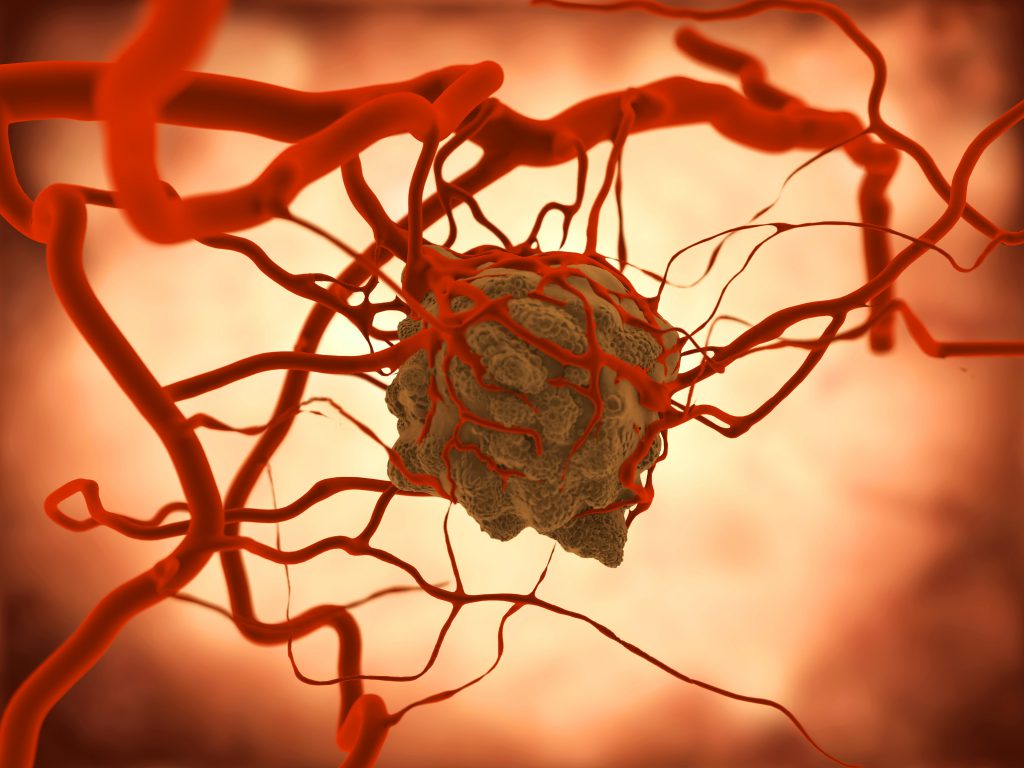
Cancer was already described by the ancient Egyptians in the so-called „Edmin Smith Papyrus“.1 It pictured the removal of tumors from the breast of women using a tool called „fire drill“.1 it was also noted that there’s no treatment for this type of disease.1
In fact, a 3,000-year-old Egyptian mummy who has died of breastcancer was found.2 Nearby, archaeologists discovered a 2,800-year-old male mummy with the so far oldest case of multiple myeloma.2 However, the oldest known case in general is a skeleton of an Egyptian who died 3,200 years ago of a soft tissue tumor that had already metastasized to the bones.3 Resulting lesions are still visible today.3
Definition
The Latin term tumor is translated to growth or lump and descibes an abnormal enlargement of a tissue.4 Because certain types of tumors looked like the feet of crabs due to the surrounding dilated blood vessels, it was used to define the name of disease.1
Types of tumors
A tumor can be differentiated by the tissue from which it originally came:
- Carcinomas: Arise in the epithelium and account for approximately 80% of all malignant tumors5
- Sarcomas: Arise in the connective and supporting tissue (fatty tissue, muscles, tendons) or muscle tissue and represent only about 1% of the malignant disease6
- Blastomas: embryonic tumors arising during tissue and organ development4
These types of tumors are summarized as solid tumors because they initially have a distinct limitation and a tight tissue association.4
In contrast, there are systemic cancers (systemic = affecting the whole body) spreading throughout the body from the oneset of the disease.4 This category includes malignant diseases of the hematopoietic and lymphatic systems (leukemia and lymphoma).4
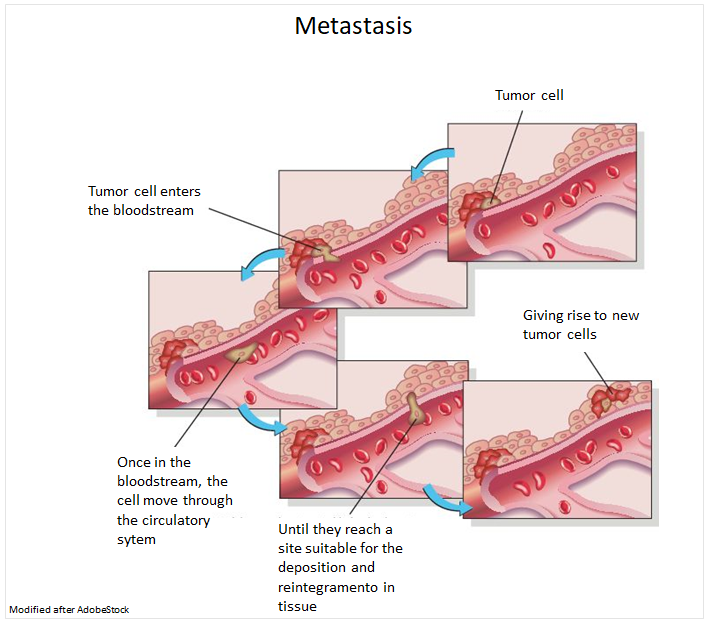
Classification
- Benign tumors displace surrounding tissue but don’t cross the border to adjacent tissue.4
- Semimaligne tumors are „limited malignant“.4,7 They invade surrounding tissue but fail to form metastases.4,7
- A malignant tumor is called cancer.4,7 It grows uncontrolled and disordered and invades and destroys surrounding tissue.4,7 Tumor cells can spread through blood vessels or lymphatics and form metastases.4
- Precancerous lesions tissue changes that are highly likely to develop into malignant tumors.7
- Carcinoma in situ (translated: cancer at the site of origin) describes a malignant tumor in its early stage which hasn’t broken through the basal membrane of the origin yet and hasn’t invaded other tissues.7
Formation
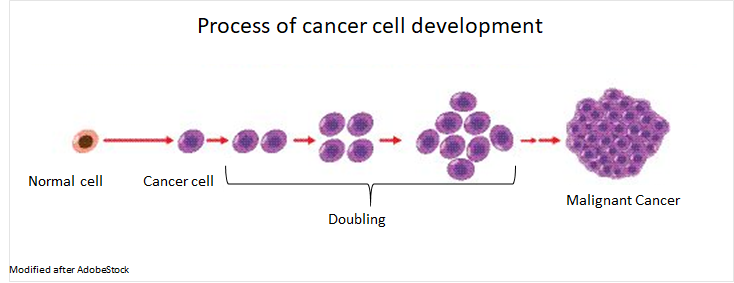
A tumor is developed when healthy cells in the body change.4 Such a change was first described in the gene RAS in 1982.8 With this observation researchers could prove that healty human cells are transformed into tumor cells by mutations.8
Mutations
A mutation describes a permanent change within the genome. This occurs spontaneouly without external cause or is produced artificially by so-called mutagens (see trigger). The following types of mutations are distinguished:
- Deletion: a part of the DNA is excised
- Insertion: an additional piece of DNA is inserted
- Substitution: a single base is exchanged
Silent mutations usually remain undetected as they have no effect in the organism; in contrast to the loss-of-function mutations, due to which the corresponding gene product loses its function. These’re
particularly dangerous in genes controlling the cell cycle and repairing DNA damage.9
The hallmarks of cancer10
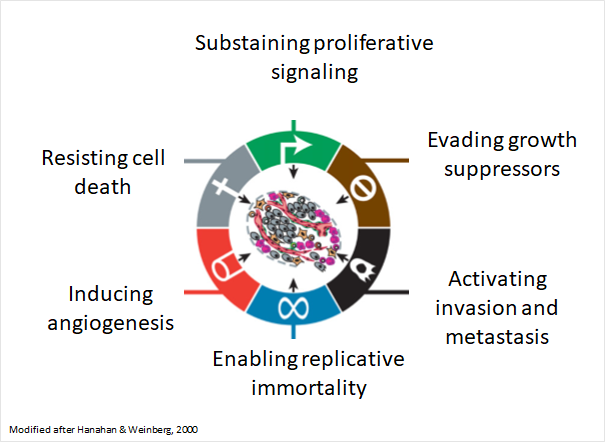
Douglas Hanahan and Robert A. Weinberg have described the characteristics of cancer cells in their publication „The hallmarks of cancer“.
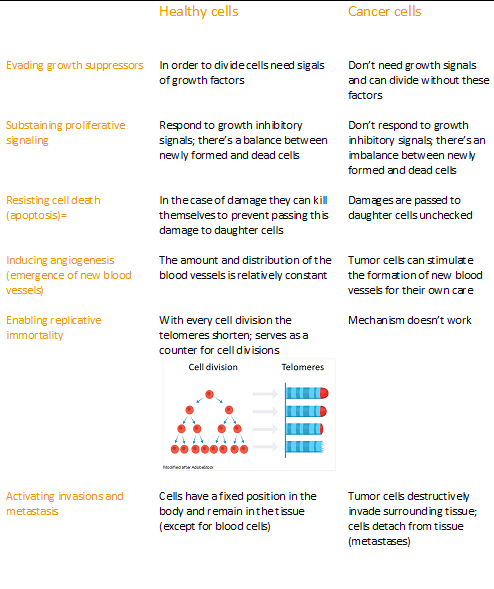
Trigger
Cancer is a very complex disease with many potential causes. Mutations can occur with or without external influence or are genetically conditioned.4 Not all damages result in a mutation.9
External influence
- Lifestyle: smoking, obesity, lack of exercise and malnutrition.4 Experts estimte that half of all cancers could be avoided by changing the lifestyle.4
- Environmental factors: carcinogenic substances, such as chemicals, environmental toxins or radiation.4 It is estimated that about 4 to 20 out of 100 people suffer from an cancer which develops due to the environment.4
- Pathogens: Especially viruses, but also bacteria and parasites. Cervical cancer, for example, is caused by HPV (human papillomavirus) or gastric cancer is caused by the bacterium Helicobacter pylori. Experts estimate that worldwide about every sixth cancer is triggered by an infection, in Germany about 4 out of 100.4
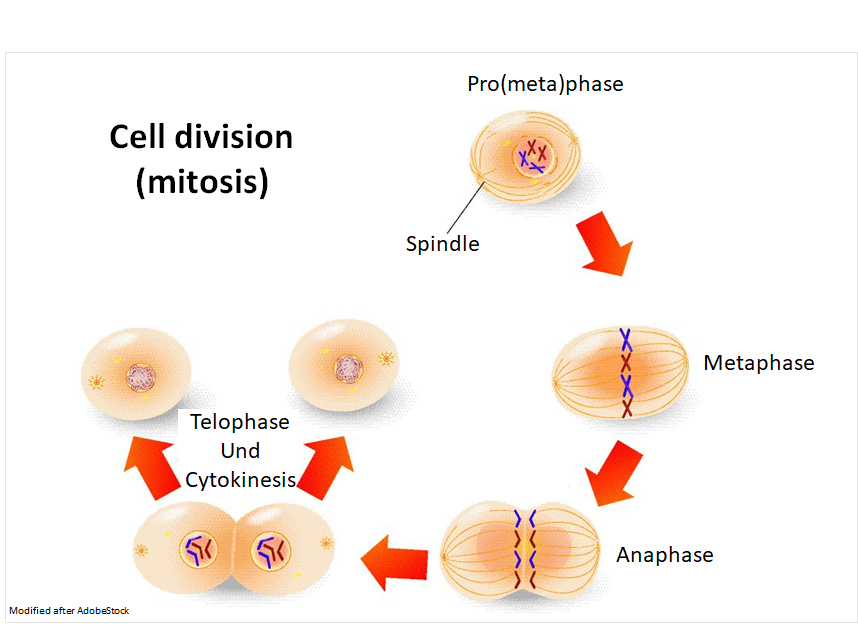
Lifestyle and the influence oft he environment are among the main causes.9
Cell division4
Cell divisions can cause damgage passing from the mother cell to the daughter cell.
A sign of aging
With higher age the risk of cancer rises. The likelihood of permanent damage due to mutations increases, because the cells can’t repair the damage anymore.11
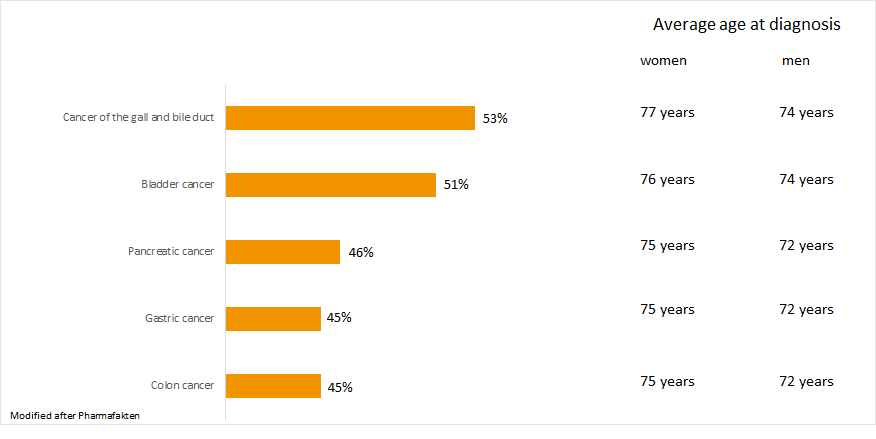
Inheritance
In addition to mutations arising spontaneously, the genetic equipment plays an important role, too. Some people have an increased risk of develop cancer because the corresponding mutated genes can be inherited.4 Experts estimate that about 5 to 10 out of 100 cancer cases are genetically determined.4 However, this doesn’t mean that every person with these particular genes inevitably suffers from cancer.4 Here, the external influences play an additional central role, too.4
Relevant genes
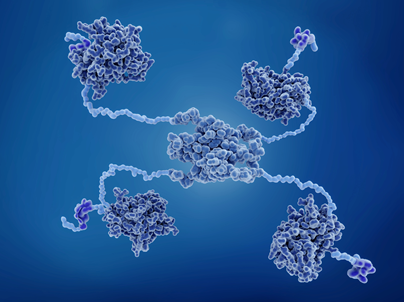
These genes include proto-oncogenes and tumor suppressor genes.8 Proto-oncogenes occur in every cell and affect the growth, division, and differentiation of a cell. Mutations result in an oncogene that, through its altered gene function, can drive cell growth excessively resulting in cancer formation. Tumor suppressor genes control the cell cycle and can reduce the likelihood of developing a tumor by their ability to induce apoptosis in damaged cells. These include, for example, the protein p53, which is also called „guardian of the genome“. In almost half of all cancer cases there’s a mutation in the gene coding for this protein.8
Gene mutations can drive cancer development in two ways: either by activating oncogenes or by deactivating tumor suppressor genes.8
Meanwhile there are over 570 genes associated with cancer.8 It’s estimated that at least five different genes must be mutated to override the control mechanisms and thus cause cancer.9 The mutations may have different causes.9 On average, about 100-1,000 different mutations contribute to the formation of a tumor.8
Contact person:
Kristina Schraml (kristina.schraml@biovariance.com)




